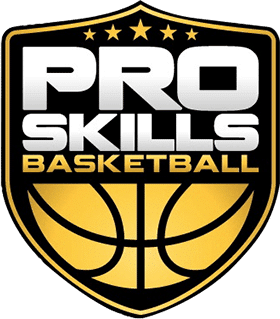
The Unfortunate Problems with AAU Basketball
By Brendan Winters — PSB Co-Founder & Former Pro Player
Before diving into the real issues with AAU basketball, let’s clarify a few things.
When most people say “AAU basketball,” they’re not referring strictly to the Amateur Athletic Union. Instead, they’re using “AAU” as a catch-all term to describe the entire world of grassroots youth basketball outside of school teams — including club teams, travel teams, and independent tournaments.
This article uses the term “AAU basketball” in that general sense.
As someone who has coached AAU teams and directed Pro Skills Basketball (PSB) Club Teams in Charlotte for over a decade, I’m not writing this as an outsider or critic. I love what grassroots basketball can offer kids — in fact, if I didn’t, I wouldn’t be doing this. But that doesn’t mean the system is perfect. Far from it.
In this article, I want to outline the most pressing AAU basketball problems — especially at the younger levels (grades 1–8) — and offer perspective on how we can improve youth basketball development for the long term.
📉 Problem #1: How AAU Basketball Prioritizes Winning Over Development
In my opinion, the biggest issue in youth AAU basketball is the overemphasis on winning during the most critical years of player development.
Let’s be real — if your goal is to win games at the 3rd, 4th, or 5th grade level, there’s a simple formula:
-
Full-court press with traps
-
Aggressive half-court zone
-
Force outside shots from kids who aren’t strong enough to make them
These tactics work in the short term because most young players don’t have the strength or skills to break presses or hit outside shots. But they also:
-
Prevent players from developing passing, spacing, and decision-making skills
-
Encourage ball-dominant behavior by the most advanced kid
-
Result in fast-break-only games that teach nothing about half-court offense
Eventually, when the press no longer works and the game slows down, these players are left behind with no basketball foundation.
🧱 Problem #2: Why Man-to-Man Defense Matters in Youth Basketball
Let’s talk about defense.
At the college and pro levels, most teams play man-to-man defense. Why? Because it develops:
-
On-ball pressure
-
Help-side rotations
-
Communication
-
Accountability
But in AAU basketball, many coaches default to zone defenses because:
-
Zones are easier to teach
-
Zones hide weak defenders
-
Zones win games at younger ages
Here’s the catch: if players don’t learn man-to-man defense when they’re young, they’ll struggle to grasp it later. Most high school and college teams will expect players to play man-to-man — not just stand in a zone and guard a spot.
Man-to-man defense requires teaching, repetition, and patience — and unfortunately, that’s often sacrificed in favor of quick wins.
🏀 Problem #3: AAU Teams Play Too Many Games, Not Enough Practices
We’re talking about practice. Yes — practice.
At Pro Skills Basketball, we’re very intentional about balancing games and practices:
-
2 practices per week
-
2 tournaments per month, on average
This aligns with USA Basketball’s youth guidelines, which emphasize the importance of repetition, instruction, and skill development in a controlled setting.
Many AAU programs don’t follow this model. Instead:
-
Teams recruit kids from multiple cities
-
Practice becomes inconvenient or nonexistent
-
Games take priority, and practices are skipped
How can a player improve without reps in a structured environment?
This imbalance — too many games, not enough practices — is a fundamental youth basketball development problem.
✈️ Problem #4: Showcase Basketball Tournaments Are Hurting Kids
Another major concern is the rise of showcase basketball tournaments — especially at the youngest levels.
I’ve seen 2nd-grade teams fly across the country to play 3 or 4 games. These weekends are exhausting and expensive. But more importantly:
Who are they showcasing for?
-
College coaches? They aren’t recruiting 2nd, 3rd, or even 6th graders.
-
Scouts? Who cares what a scout says about a 10-year-old?
These “showcase” events are marketed as big opportunities — but in reality, they are money-grabs that do nothing for skill development. That time would be better spent practicing, developing, and just being a kid.
🚨 More Grassroots Basketball Issues to Consider
Beyond the four major issues above, the broader grassroots basketball ecosystem has other problems:
-
Player poaching: Teams constantly recruit kids away from other programs.
-
Team-hopping: Players switch teams every few weeks in search of more playing time or wins.
-
Overuse injuries: With no practice and non-stop tournament play, many players are physically overworked.
-
Parent pressure: Unrealistic expectations from parents create unhealthy stress for players.
All of this adds up to a system that values winning, exposure, and clout over teaching, growth, and well-being.
🌍 What Pro Skills Basketball Is Doing to Fix AAU Problems
At Pro Skills Basketball, we are proud to be different.
Here’s how our Club Teams model addresses common AAU basketball problems:
-
Real coaches, not volunteers
-
Structured practice-to-game ratios
-
Focus on long-term development over short-term wins
-
11-month memberships in most cities to support consistent growth
-
Culture-first approach that emphasizes teamwork, discipline, and love for the game
We’re not trying to “out-talent” other teams — we’re trying to out-develop them.
🔁 Final Thoughts on AAU Basketball Problems & the Path Forward
AAU basketball has tremendous potential — but it also has serious flaws, especially when it comes to youth basketball development.
If we want to raise better players and better people, we need to:
-
Teach man-to-man defense early
-
Focus on practices over games
-
Eliminate wasteful “showcase” events at the youth level
-
Hold coaches and programs to a higher standard
That’s what we strive to do at Pro Skills Basketball. We believe in development over exposure, team over ego, and long-term growth over short-term trophies.



 »
»